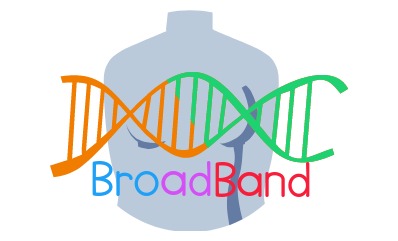

The second panel is focused on somatic single nucleotide variants data and provides a comprehensive report about the frequencies of aberration of genes
The widget panel (Figure 2A) is populated with multiple selection options which will update the BRCA data displayed by default. Specifically, the widget panel allows the user to: 1. Upload a new BRCA dataset to be inspected in addition to those ones available by default. The cancel button will reverse the operation by removing the uploaded dataset among available data. 2. Select BRCA cohorts of interest. If the user uploaded a custom dataset, it will be listed here. 3. Select data based on BRCA subtypes. 4. Select data based on tumor classification. 5. Select the N most frequently aberrant genes by using the provided slider. 6. Reset all settings to default. 7. Apply selected options to data and update plots and the table accordingly. In addition to the widgets bar, the page layout also includes two plots, a table and three downloads buttons which allow the user to save all outputs displayed. The plots and the table are the results of options selected by the user. Specifically, the first plot (Figure 2B, left plot) comprises multiple bar charts, data represented are stratified by tumor classification (one for each row) and for breast cancer subtypes (one for each column; the first column “all” comprises tumor subtypes data altogether) as reported on top of each inset panel. Within each bar chart, genes (listed on the y-axis) are ranked based on their aberration frequency. Alongside (Figure 2B, right plot), the heatmap compares aberration frequencies of genes between primary and metastatic and by cancer subtypes. Data represented in this way could be helpful to spot by visual inspection which genes are mutually exclusive within a single tumor class. The table (Figure 2C) reports data represented in both plot